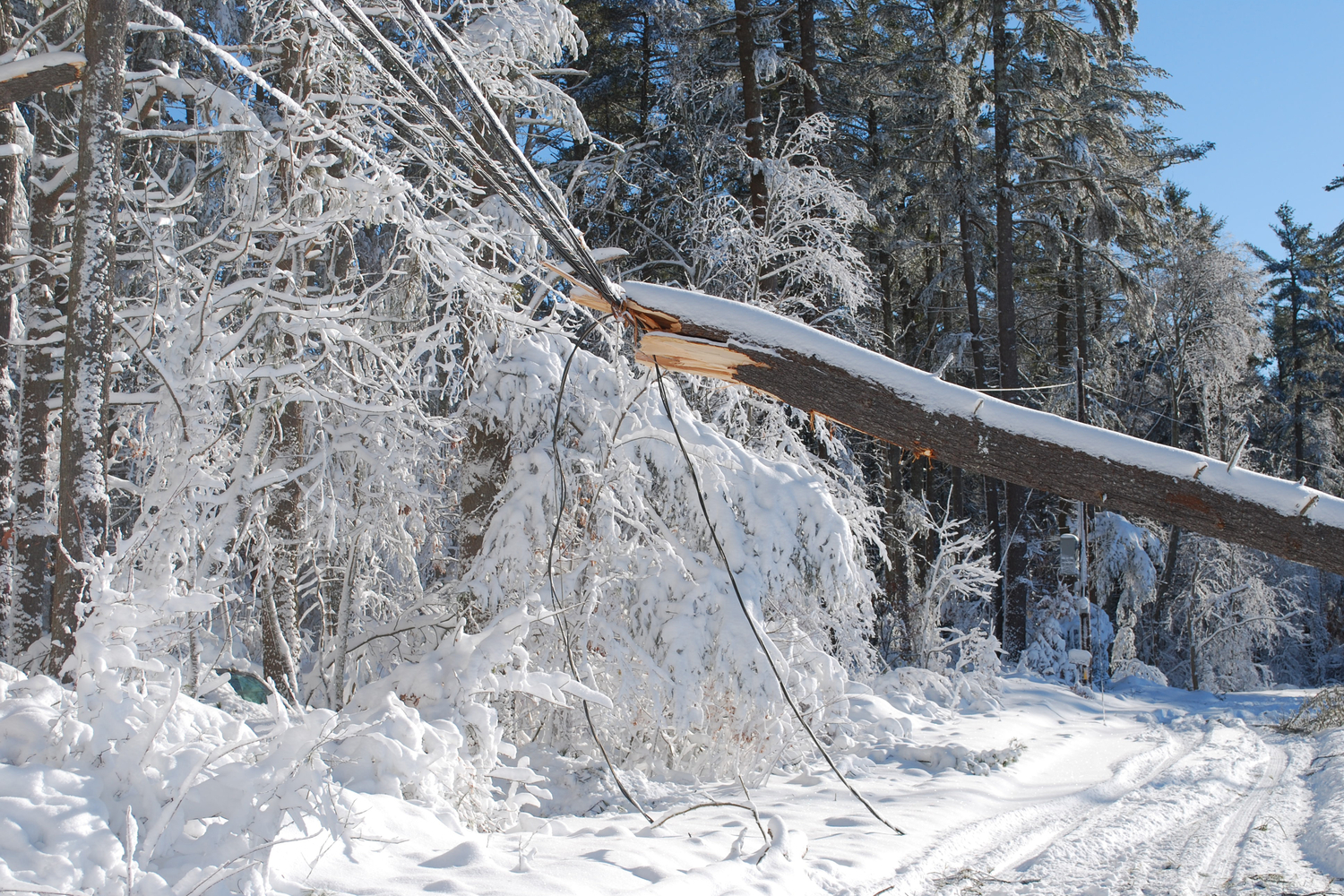Ice Storms and the Damage They Can Cause
As we move into the winter season, many parts of the country will be affected by harsh weather, in particular, snow storms that turn into ice storms. Ice storms can be dangerous to our homes in many different ways. Accumulated ice can damage trees, bring down power lines, make driving and walking hazardous, and damage our homes. Ice storms are classified according their amount of accumulation and the impact that they have. The three classifications are nuisance, disruptive, and crippling.
Classes of Ice Storms
Nuisance Ice Storms
A nuisance ice storm typically has less than ¼ inch of ice accumulation. Mainly this class of ice storm only affects travel. Streets, driveways, and sidewalks are covered with a thin glazing making driving and travel on foot hazardous.
Disruptive Ice Storms
A disruptive ice storm usually involves ¼ to ½ inch of accumulation. At this level of accumulation, ice can begin to damage trees and shrubbery. Power lines can be threatened. This due to the weight of the ice. ½ inch of ice can add up to 30 times as much weight to tree branches and up to 500 pounds of extra weight to power lines.
Crippling Ice Storms
A crippling ice storm, with widespread accumulations of one inch or more can cause severe damage to trees, structures, and power lines. If gusty winds are added to an ice storm they increase the chances of any damage. Downed trees can fall on roofs or against buildings. Power outages can last for days at a time. Without electricity and heat homes could be subject to flooding from non-working sump pumps and bursting water pipes.
Ice Storms and Damage to Your Home
Additional weight of the ice is responsible for most of the damage that accumulated ice causes. Roofs and patio coverings are only designed to carry a certain amount of weight. Most roofs are designed to carry 20 pounds of weight per square foot. Flat or slightly sloped roofs, those with less that a 6:12 pitch, are at greatest risk from the weight of ice. One inch of ice can add 57 pounds of weight per square foot to your roof, which is equal to a foot of new snow.
Trees and tree branches are very susceptible to ice damage. As ice builds up on branches, the branches could snap off and land on your roof. They can damage shingles or even puncture the roof allowing water to enter your home. As water soaks insulation, the insulation becomes heavier and heavier and may lead to a ceiling collapse. A ceiling collapse of that nature can damage furnishings, possessions, or cause bodily injury to anyone that might be in the room when the collapse occurs.
Gutters and downspouts are parts of the home that can be damaged by ice buildup. As more and more ice and moisture enters your gutters with nowhere to go, ice dams can form or the gutters can be pulled away from the fascia board. When gutters are pulled away, and the ice eventually melts, the water can drop straight down along the foundation. That could result in a flooded basement or cracked foundation walls.
How Can You Limit the Damage Caused By Ice Storms?
One of the best things you can do before an ice storm hits is to make sure that your roof’s drainage is unimpeded. Gutters should be cleared of fallen leaves and other debris. Downspouts should be free from clogs. A neat trick to help prevent this type of ice damage is to fill a long stocking or cloth tube with rock salt or a deicing compound. Lay the stockings or tubes perpendicular to the roofline, about 4-6 feet apart. The ice melting compound will keep a channel area thawed so that the water from melting ice can flow off the roof, into the gutters and down the downspouts (Check downspouts to make sure they are directed away from your foundation).
Keep an eye out for trees and branches that extend over your roof. Before winter weather sets in, trim or prune trees and branches that are overhanging or are in close proximity to your house. That will keep them breaking under the weight of any ice accumulation and falling on your roof during an ice storm.
Check on the quality and thickness of your attic insulation. Not having enough of a R-factor can lead to the melting and refreezing of ice on your roof due to heat loss in the attic (R-factor is the insulations resistance to conductive heat flow; the higher the number, the better the resistance). Depending on where in the United States you live, your attic should have enough insulation to equal a R-factor of R25-R49, at least 3-4 inches of thickness. Attics should also be well ventilated. Hot air that is trapped against the roof can also result in ice thawing then refreezing.
Ways to Prepare for Dangerous Ice Storms
If an ice storm is in the forecast there are things you can do in advance to remain safe and limit the negative affects of the storm:
- Have an adequate supply of food, water, and medicines on hand.
- An extended loss of electrical power is possible, so have plenty of flashlights, candles, matches, and batteries in your home.
- Purchase appliance thermometers to place in your refrigerators and freezers. Temperatures for refrigerators should remain below 40° and freezers below 0°.
- Charge, and keep charged, all of your electronic. Car chargers for cell phones can be used to repower many devices.
- If possible have a secondary source of heat that doesn’t require electricity. Never use portable generators, camp stoves, or grills inside your home or garage. These can cause accidental carbon monoxide poisoning.
- Consider pruning trees and especially limbs that may lean towards or overhang your home.
- If there are infants in the home, purchase canned baby formula that requires no added water
Why Can Ice Storms be Dangerous to Your Home?
They often cause damage that isn’t seen until the weather breaks and warm up. When water leaks are slow or slight, they often aren’t identified until significant damage is done or mold is discovered. If you experience water damage in your home that is caused by an ice storm contact Water Mold Fire Restoration. We have certified professionals standing by to offer assistance. Contact us at 800-905-0277 or by email at help@watermoldandfire.net.








